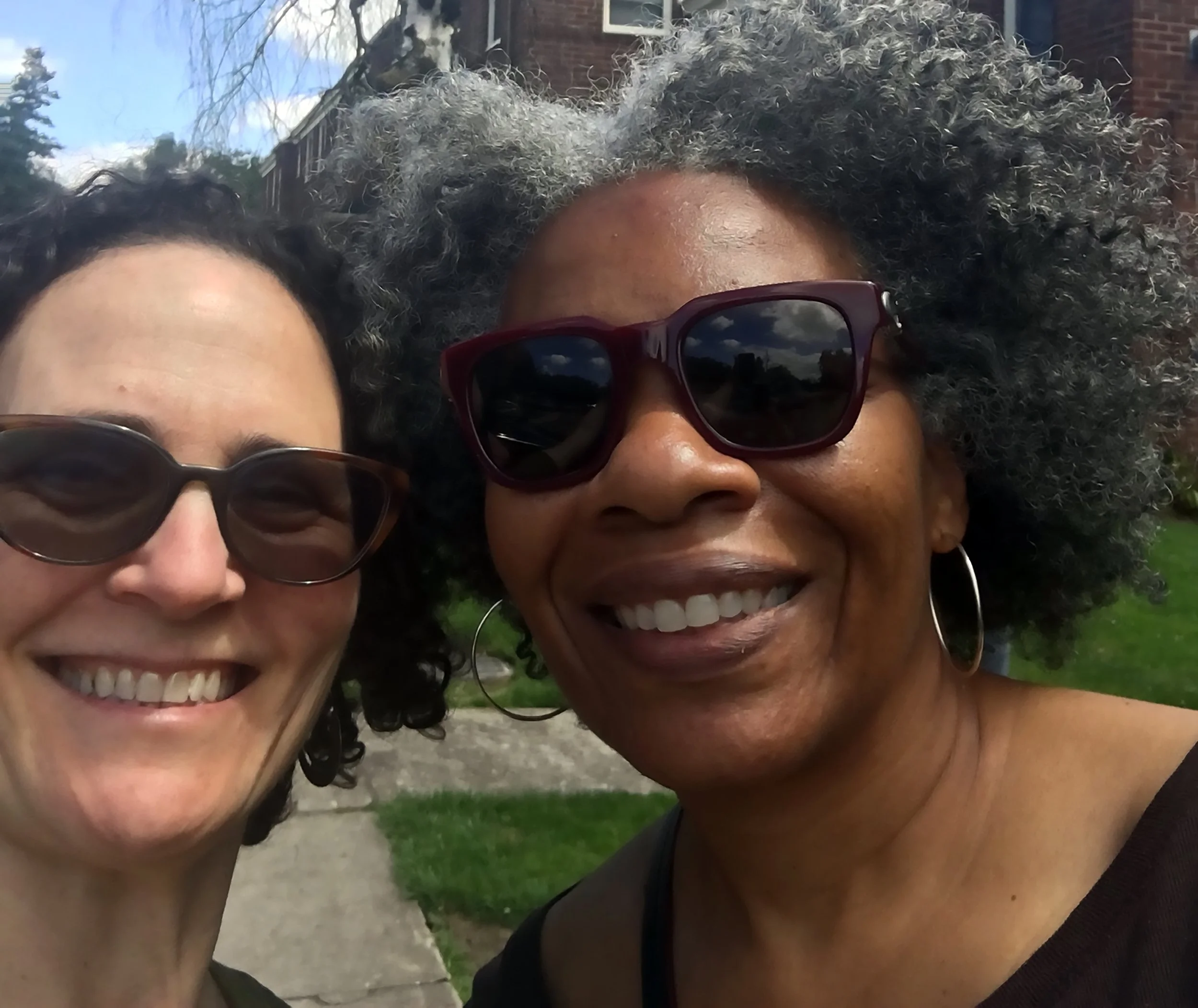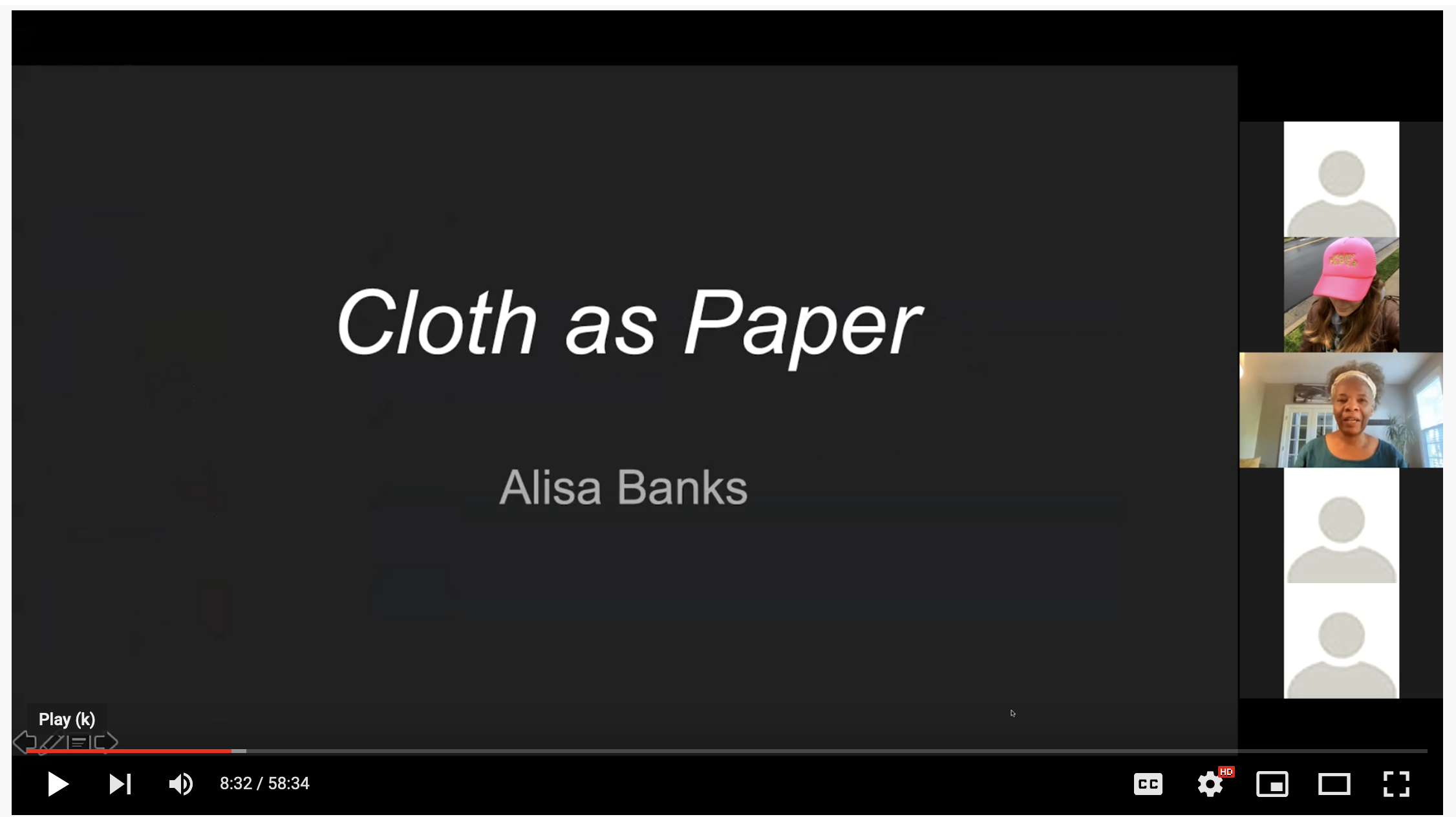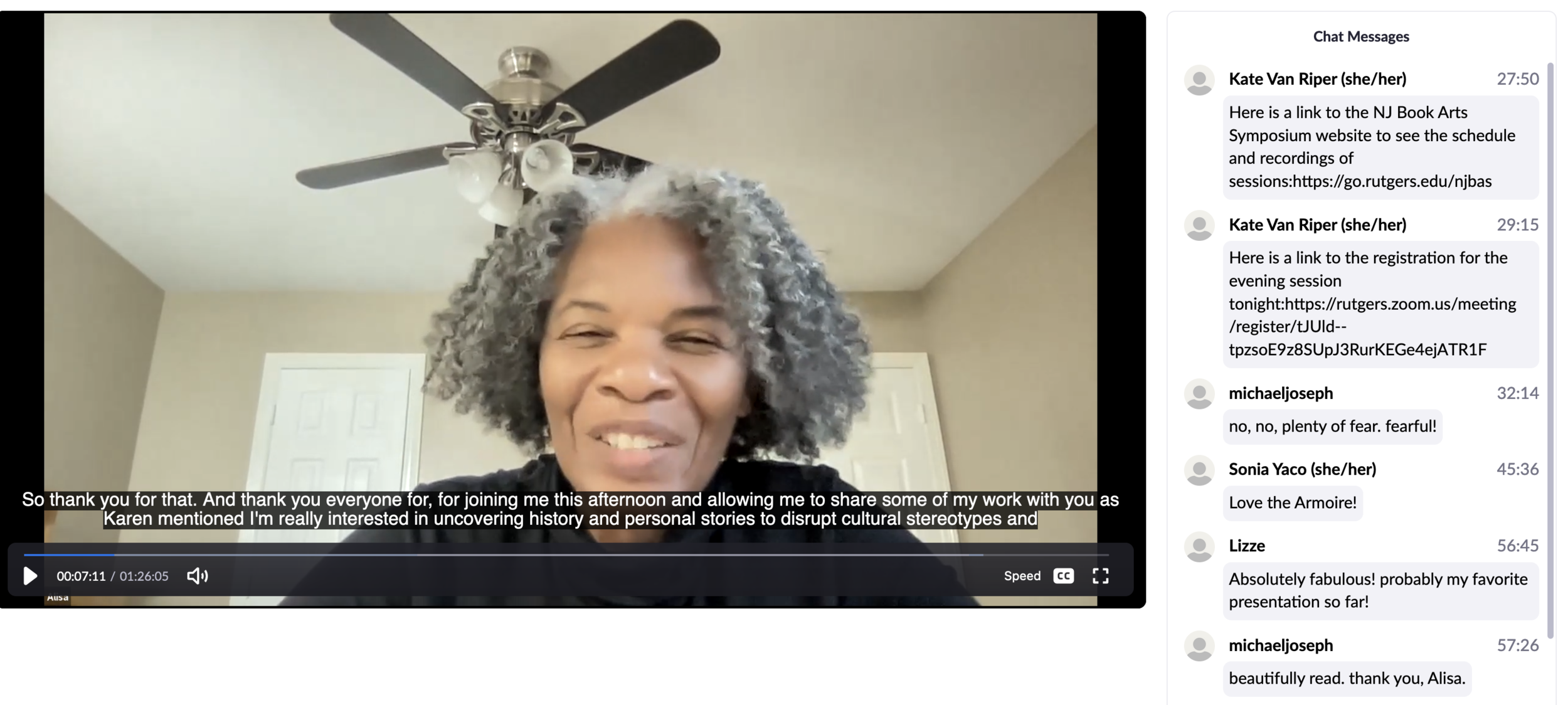Political Bodies @ University of Puget Sound
Mixed Messages @ smith college
Artist Books Unshelved @ Bainbridge Island Museum of Art
Cultural Substrates as Paper @ the North American Handpapermakers Fluid Practices Conference
27th New Jersey Book Arts Symposium @ Rutgers University: The words turned Sideways
Textile Talks: Talking About Books
3 Questions with Art in Embassies
craft Boston: Fiber Stories
Artists Books @ Tulane University Special Collections (TUSC)
the book
“As an interactive device, experiencing a book is often a performative act. ”
Interwoven Alphabet featured in Artist Books Unshelved
Presentation starts at the 07:19 mark.
Presentation is approximately 1 hour.
Readings start at about the 07:00 minute mark. Presentation is approximately 20 minutes.
Textile Talks Conversation with Alisa Banks, Annie Lopez, and R. Skye Tafoya 2021
Presentation is approximately 1 hour.
3 Questions Interview with Art in Embassies
Presentation is approximately 7 minutes.
Fiber Stories interview with Society of Arts + Crafts at Craft Boston 2021
Presentation is approximately 1 hour.
Artist Books at Tulane Special Collections
Presentation is approximately 1 hour.
In 2018, I was invited to submit a definition for The Book, by Amaranth Borsuk. Before submitting, I asked for feedback from someone I trust - my daughter Andréa. The resulting conversation was interesting in that it touches on non-traditional aspects of the book.
Definition
In the most traditional sense, a book is portable, intimate, personal and interactive. Conversely, it can be loud, two-dimensional and off-limits. A book might consist of pages or not and words or images, or neither. As an interactive device, experiencing a book is often a performative act. Some books are highly revered while others are considered dangerous. The versatility of a book is that its sculptural qualities can be exploited in a manner that relays an idea on multiple levels. At its most powerful, the ability to discern the content of a book can bring personal esteem or destruction, incite action, or provide revelation.
A “Text”-ured Conversation
Andréa: Hahah. I mainly read books. I know you make art books, but my relationship to them is different. So, I think this is phrased in a way that explains what books are to you as someone that makes them and experiments with form.
Alisa: Yes, but it’s true that even a traditional novel is sculptural in form...one could even argue that a reader is a sculptural form...and the act of reading is performative. A book artist can take the inherent properties of a book and manipulate them to their own end. (Boy, do I sound nerdy!)
Andréa: Lol yes. But a traditional novel is still a pretty standard form, and the act of reading is more so performative if you’re reading in public. It could be self-performative, but you’d have to be self-aware enough to be paying attention to yourself when reading alone, and I’m not sure most people do.
Alisa: Perhaps it is the author that is conducting the performance...
Andréa: Or the narrator
Alisa: Yes!!!
Andréa: The author might be more like the playwright/director.
Alisa: Exactly!
Andréa: Or the playwright. The narrator is director, the additional characters are the cast, and the reader is the audience.
Alisa: Yes. Or the reader is the actor via the act of reading, turning pages, etc. And if it’s say, a book with folded pages or one where the reader has to flip to another section for a bit of info in order to continue, then it is a more complicated performance!
Andréa: Yes. But my argument is that with a traditional novel the performance isn’t that complicated. It’s like going to Mass when it’s not Holy Week. There’s a sequence and we know what to expect. That’s the difference between your relationship with books as an artist/maker of books, and everyone else that mostly just reads them. Then that distance is even greater with non-fiction.
Alisa: That’s right. The reader knows what to expect insofar as the performance is concerned. The primary alteration is the speed. I find it interesting that the author can set the performance to an unknowing victim, the reader!
Andréa: Which is why I think of the reader as the audience not a performer. They have no control over pacing, words, expressions. There’s room to interpret the material, but only from what’s presented to you. You can imagine subtext for the characters, but they aren’t necessarily using it. But I guess some of that might depend on the writing strength of the author.
Alisa: I’m thinking the performance is a manipulation of sorts.
Andréa: You’re thinking of it as a meta performance maybe? A performance in a performance?
Alisa: That’s so insightful of you! I guess the paragraph is ok after all since it brought about interesting dialog! You’re wonderful! 😊
edges
The following are excerpts from an interview with a book arts student from the University of Alabama, 2016:
Q: What goes through your mind when you are about to make your piece? What questions do you ask yourself to help you organize the details to make your artwork?
A: I draw inspiration from just about everywhere…sometimes it is a word or phrase that I hear or read. It may be something as simple as hearing a word while reading another passage, or it may be the result of a conversation, or something that I see, and of course anytime someone tells me a story there’s the possibility for art! The inspiration leads to questions that often (usually) include lots of research and sometimes interviews. Other questions have to do with design choices. I work in multi media so I have to decide if a piece should be in 2D or 3D, for instance.
Q: Do you think that one of your works of art can represent invisibility and identity at the same time?
A: Definitely! My work focuses on those who live under the radar…they live quiet lives…they are not celebrities or heroes, they don’t have powerful positions. This probably covers most of us!
Q: Do the found materials you use to make your art have any meaning or do you just like to reuse items?
A: Sometimes the actual materials have sentimental meaning, but I’m drawn to textiles that have a history, even if I don’t know what that history is. It seems appropriate considering that the work often addresses the past.
Q: What inspired you to create your collection Edges and why did you use the specific form you did rather than any other?
A: I was exploring hair culture and was thinking of the various meaning of the word “edge” – edges of hair, living on the edge, etc. Initially, I thought of the edge of a piece of paper or canvas. In the end I decided that a small book could fit easily into the hand and is portable. My intent was to use the hair treatment in a way that would show how much activity, creativity and life happens on the “edges” of mainstream society.
Q: How do you incorporate black history in your art pieces?
A: Sometimes the reference is direct as in the piece Rosenwald, which is about the schools that were built in black communities throughout the South in the early 20th century. Sometimes, it is indirect as in Planted, which is a story about gardening from the perspective of a black person. History to me is anything that happened in the past.
Q: How important do you think black history is in our culture today and do you think black history and culture formed us the way we are today? If so, how?
I think we are all products of history brought forward. The question is how much are we aware of it. Many (positive) aspects of black culture have been co-opted so that it is no longer believed to be black history, but mainstream history and the origins are lost (i.e. not attributed). Knowing black history will reveal a multifaceted and often visionary culture of intense experimentation, creativity, inventiveness, and passion.






